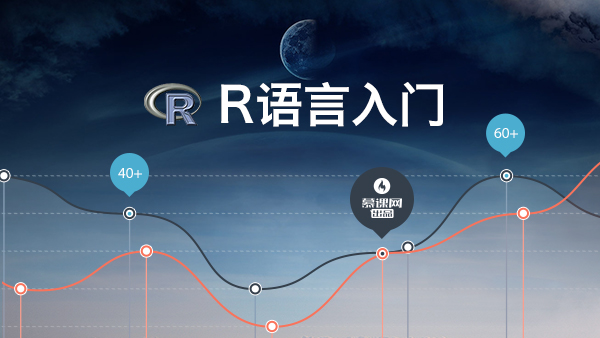1. hbase开发
1.1. 配置
HBaseConfiguration
包:org.apache.hadoop.hbase.HBaseConfiguration
作用:通过此类可以对HBase进行配置
用法实例:
Configuration config = HBaseConfiguration.create();
说明: HBaseConfiguration.create() 默认会从classpath 中查找 hbase-site.xml 中的配置信息,初始化 Configuration。
使用方法:
static Configuration config = null;
static {
config = HBaseConfiguration.create();
config.set("hbase.zookeeper.quorum", "slave1,slave2,slave3");
config.set("hbase.zookeeper.property.clientPort", "2181");}
1.2. 表管理类
HBaseAdmin
包:org.apache.hadoop.hbase.client.HBaseAdmin
作用:提供接口关系HBase 数据库中的表信息
用法:
HBaseAdmin admin = new HBaseAdmin(config);
1.3. 表描述类
HTableDescriptor
包:org.apache.hadoop.hbase.HTableDescriptor
作用:HTableDescriptor 类包含了表的名字以及表的列族信息
表的schema(设计)
用法:
HTableDescriptor htd =new HTableDescriptor(tablename);
htd.addFamily(new HColumnDescriptor(“myFamily”));
1.4. 列族的描述类
HColumnDescriptor
包:org.apache.hadoop.hbase.HColumnDescriptor
作用:HColumnDescriptor 维护列族的信息
用法:
htd.addFamily(new HColumnDescriptor(“myFamily”));
1.5. 创建表的操作
CreateTable(一般我们用shell创建表)
static Configuration config = null;
static {
config = HBaseConfiguration.create();
config.set("hbase.zookeeper.quorum", "slave1,slave2,slave3");
config.set("hbase.zookeeper.property.clientPort", "2181");
}
HBaseAdmin admin = new HBaseAdmin(config);
HTableDescriptor desc = new HTableDescriptor(tableName);
HColumnDescriptor family1 = new HColumnDescriptor(“f1”);
HColumnDescriptor family2 = new HColumnDescriptor(“f2”);
desc.addFamily(family1);
desc.addFamily(family2);
admin.createTable(desc);
1.6. 删除表
HBaseAdmin admin = new HBaseAdmin(config);
admin.disableTable(tableName);
admin.deleteTable(tableName);
1.7. 创建一个表的类
HTable
包:org.apache.hadoop.hbase.client.HTable
作用:HTable 和 HBase 的表通信
用法:
// 普通获取表
HTable table = new HTable(config,Bytes.toBytes(tablename);
// 通过连接池获取表
Connection connection = ConnectionFactory.createConnection(config);
HTableInterface table = connection.getTable(TableName.valueOf("user"));
1.8. 单条插入数据
Put
包:org.apache.hadoop.hbase.client.Put
作用:插入数据
用法:
Put put = new Put(row);
p.add(family,qualifier,value);
说明:向表 tablename 添加 “family,qualifier,value”指定的值。
示例代码:
Connection connection = ConnectionFactory.createConnection(config);
HTableInterface table = connection.getTable(TableName.valueOf("user"));
Put put = new Put(Bytes.toBytes(rowKey));
put.add(Bytes.toBytes(family), Bytes.toBytes(qualifier),Bytes.toBytes(value));
table.put(put);
1.9. 批量插入
批量插入
List<Put> list = new ArrayList<Put>();
Put put = new Put(Bytes.toBytes(rowKey));//获取put,用于插入
put.add(Bytes.toBytes(family), Bytes.toBytes(qualifier),Bytes.toBytes(value));//封装信息
list.add(put);
table.put(list);//添加记录
1.10. 删除数据
Delete
包:org.apache.hadoop.hbase.client.Delete
作用:删除给定rowkey的数据
用法:
Delete del= new Delete(Bytes.toBytes(rowKey));
table.delete(del);
代码实例
Connection connection = ConnectionFactory.createConnection(config);
HTableInterface table = connection.getTable(TableName.valueOf("user"));
Delete del= new Delete(Bytes.toBytes(rowKey));
table.delete(del);
1.11. 单条查询
Get
包:org.apache.hadoop.hbase.client.Get
作用:获取单个行的数据
用法:
HTable table = new HTable(config,Bytes.toBytes(tablename));
Get get = new Get(Bytes.toBytes(row));
Result result = table.get(get);
说明:获取 tablename 表中 row 行的对应数据
代码示例:
Connection connection = ConnectionFactory.createConnection(config);
HTableInterface table = connection.getTable(TableName.valueOf("user"));
Get get = new Get(rowKey.getBytes());
Result row = table.get(get);
for (KeyValue kv : row.raw()) {
System.out.print(new String(kv.getRow()) + " ");
System.out.print(new String(kv.getFamily()) + ":");
System.out.print(new String(kv.getQualifier()) + " = ");
System.out.print(new String(kv.getValue()));
System.out.print(" timestamp = " + kv.getTimestamp() + "\n");
}
1.12. 批量查询
ResultScanner
包:org.apache.hadoop.hbase.client.ResultScanner
作用:获取值的接口
用法:
ResultScanner scanner = table.getScanner(scan);
For(Result rowResult : scanner){
Bytes[] str = rowResult.getValue(family,column);
}
说明:循环获取行中列值。
代码示例:
Connection connection = ConnectionFactory.createConnection(config);
HTableInterface table = connection.getTable(TableName.valueOf("user"));
Scan scan = new Scan();
scan.setStartRow("a1".getBytes());
scan.setStopRow("a20".getBytes());
ResultScanner scanner = table.getScanner(scan);
for (Result row : scanner) {
System.out.println("\nRowkey: " + new String(row.getRow()));
for (KeyValue kv : row.raw()) {
System.out.print(new String(kv.getRow()) + " ");
System.out.print(new String(kv.getFamily()) + ":");
System.out.print(new String(kv.getQualifier()) + " = ");
System.out.print(new String(kv.getValue()));
System.out.print(" timestamp = " + kv.getTimestamp() + "\n");
}
}
1.13. hbase过滤器
1.13.1. FilterList
FilterList 代表一个过滤器列表,可以添加多个过滤器进行查询,多个过滤器之间的关系有:
与关系(符合所有):FilterList.Operator.MUST_PASS_ALL
或关系(符合任一):FilterList.Operator.MUST_PASS_ONE
使用方法:
FilterList filterList = new FilterList(FilterList.Operator.MUST_PASS_ONE);
Scan s1 = new Scan();
filterList.addFilter(new SingleColumnValueFilter(Bytes.toBytes(“f1”), Bytes.toBytes(“c1”), CompareOp.EQUAL,Bytes.toBytes(“v1”) ) );
filterList.addFilter(new SingleColumnValueFilter(Bytes.toBytes(“f1”), Bytes.toBytes(“c2”), CompareOp.EQUAL,Bytes.toBytes(“v2”) ) );
// 添加下面这一行后,则只返回指定的cell,同一行中的其他cell不返回
s1.addColumn(Bytes.toBytes(“f1”), Bytes.toBytes(“c1”));
s1.setFilter(filterList); //设置filter
ResultScanner ResultScannerFilterList = table.getScanner(s1); //返回结果列表
1.13.2. 过滤器的种类
过滤器的种类:
列植过滤器—SingleColumnValueFilter
过滤列植的相等、不等、范围等
列名前缀过滤器—ColumnPrefixFilter
过滤指定前缀的列名
多个列名前缀过滤器—MultipleColumnPrefixFilter
过滤多个指定前缀的列名
rowKey过滤器—RowFilter
通过正则,过滤rowKey值。
1.13.3. 列植过滤器—SingleColumnValueFilter
SingleColumnValueFilter 列值判断
相等 (CompareOp.EQUAL ),
不等(CompareOp.NOT_EQUAL),
范围 (e.g., CompareOp.GREATER)…………
下面示例检查列值和字符串'values' 相等...
SingleColumnValueFilter f = new SingleColumnValueFilter(
Bytes.toBytes("cFamily") Bytes.toBytes("column"), CompareFilter.CompareOp.EQUAL,
Bytes.toBytes("values"));
s1.setFilter(f);
注意:如果过滤器过滤的列在数据表中有的行中不存在,那么这个过滤器对此行无法过滤。
1.13.4. 列名前缀过滤器—ColumnPrefixFilter
过滤器—ColumnPrefixFilter
ColumnPrefixFilter 用于指定列名前缀值相等
ColumnPrefixFilter f = new ColumnPrefixFilter(Bytes.toBytes("values"));
s1.setFilter(f);
1.13.5. 多个列值前缀过滤器—MultipleColumnPrefixFilter
MultipleColumnPrefixFilter 和 ColumnPrefixFilter 行为差不多,但可以指定多个前缀
byte[][] prefixes = new byte[][] {Bytes.toBytes("value1"),Bytes.toBytes("value2")};
Filter f = new MultipleColumnPrefixFilter(prefixes);
s1.setFilter(f);
1.13.6. rowKey过滤器—RowFilter
RowFilter 是rowkey过滤器
通常根据rowkey来指定范围时,使用scan扫描器的StartRow和StopRow方法比较好。
Filter f = new RowFilter(CompareFilter.CompareOp.EQUAL, new RegexStringComparator("^1234")); //匹配以1234开头的rowkey
s1.setFilter(f);
2. MapReduce操作Hbase
2.1. 实现方法
Hbase对MapReduce提供支持,它实现了TableMapper类和TableReducer类,我们只需要继承这两个类即可。
1、写个mapper继承TableMapper<Text, IntWritable>
参数:Text:mapper的输出key类型; IntWritable:mapper的输出value类型。
其中的map方法如下:
map(ImmutableBytesWritable key, Result value,Context context)
参数:key:rowKey;value: Result ,一行数据; context上下文
2、写个reduce继承TableReducer<Text, IntWritable, ImmutableBytesWritable>
参数:Text:reducer的输入key; IntWritable:reduce的输入value;
ImmutableBytesWritable:reduce输出到hbase中的rowKey类型。
其中的reduce方法如下:
reduce(Text key, Iterable<IntWritable> values,Context context)
参数: key:reduce的输入key;values:reduce的输入value;
2.2. 准备表
1、建立数据来源表‘word’,包含一个列族‘content’
向表中添加数据,在列族中放入列‘info’,并将短文数据放入该列中,如此插入多行,行键为不同的数据即可
2、建立输出表‘stat’,包含一个列族‘content’
3、通过Mr操作Hbase的‘word’表,对‘content:info’中的短文做词频统计,并将统计结果写入‘stat’表的‘content:info中’,行键为单词
2.3. 实现
[java] view plain copy print?
<span style="font-size:14px;">package com.itcast.hbase;
import java.io.IOException;
import java.util.ArrayList;
import java.util.List;
import org.apache.hadoop.conf.Configuration;
import org.apache.hadoop.hbase.HBaseConfiguration;
import org.apache.hadoop.hbase.HColumnDescriptor;
import org.apache.hadoop.hbase.HTableDescriptor;
import org.apache.hadoop.hbase.client.HBaseAdmin;
import org.apache.hadoop.hbase.client.HTable;
import org.apache.hadoop.hbase.client.Put;
import org.apache.hadoop.hbase.client.Result;
import org.apache.hadoop.hbase.client.Scan;
import org.apache.hadoop.hbase.io.ImmutableBytesWritable;
import org.apache.hadoop.hbase.mapreduce.TableMapReduceUtil;
import org.apache.hadoop.hbase.mapreduce.TableMapper;
import org.apache.hadoop.hbase.mapreduce.TableReducer;
import org.apache.hadoop.hbase.util.Bytes;
import org.apache.hadoop.io.IntWritable;
import org.apache.hadoop.io.Text;
import org.apache.hadoop.mapreduce.Job;
/**
* mapreduce操作hbase
* @author wilson
*
*/
public class HBaseMr {
/**
* 创建hbase配置
*/
static Configuration config = null;
static {
config = HBaseConfiguration.create();
config.set("hbase.zookeeper.quorum", "slave1,slave2,slave3");
config.set("hbase.zookeeper.property.clientPort", "2181");
}
/**
* 表信息
*/
public static final String tableName = "word";//表名1
public static final String colf = "content";//列族
public static final String col = "info";//列
public static final String tableName2 = "stat";//表名2
/**
* 初始化表结构,及其数据
*/
public static void initTB() {
HTable table=null;
HBaseAdmin admin=null;
try {
admin = new HBaseAdmin(config);//创建表管理
/*删除表*/
if (admin.tableExists(tableName)||admin.tableExists(tableName2)) {
System.out.println("table is already exists!");
admin.disableTable(tableName);
admin.deleteTable(tableName);
admin.disableTable(tableName2);
admin.deleteTable(tableName2);
}
/*创建表*/
HTableDescriptor desc = new HTableDescriptor(tableName);
HColumnDescriptor family = new HColumnDescriptor(colf);
desc.addFamily(family);
admin.createTable(desc);
HTableDescriptor desc2 = new HTableDescriptor(tableName2);
HColumnDescriptor family2 = new HColumnDescriptor(colf);
desc2.addFamily(family2);
admin.createTable(desc2);
/*插入数据*/
table = new HTable(config,tableName);
table.setAutoFlush(false);
table.setWriteBufferSize(5);
List<Put> lp = new ArrayList<Put>();
Put p1 = new Put(Bytes.toBytes("1"));
p1.add(colf.getBytes(), col.getBytes(), ("The Apache Hadoop software library is a framework").getBytes());
lp.add(p1);
Put p2 = new Put(Bytes.toBytes("2"));p2.add(colf.getBytes(),col.getBytes(),("The common utilities that support the other Hadoop modules").getBytes());
lp.add(p2);
Put p3 = new Put(Bytes.toBytes("3"));
p3.add(colf.getBytes(), col.getBytes(),("Hadoop by reading the documentation").getBytes());
lp.add(p3);
Put p4 = new Put(Bytes.toBytes("4"));
p4.add(colf.getBytes(), col.getBytes(),("Hadoop from the release page").getBytes());
lp.add(p4);
Put p5 = new Put(Bytes.toBytes("5"));
p5.add(colf.getBytes(), col.getBytes(),("Hadoop on the mailing list").getBytes());
lp.add(p5);
table.put(lp);
table.flushCommits();
lp.clear();
} catch (Exception e) {
e.printStackTrace();
} finally {
try {
if(table!=null){
table.close();
}
} catch (IOException e) {
e.printStackTrace();
}
}
}
/**
* MyMapper 继承 TableMapper
* TableMapper<Text,IntWritable>
* Text:输出的key类型,
* IntWritable:输出的value类型
*/
public static class MyMapper extends TableMapper<Text, IntWritable> {
private static IntWritable one = new IntWritable(1);
private static Text word = new Text();
@Override
//输入的类型为:key:rowKey; value:一行数据的结果集Result
protected void map(ImmutableBytesWritable key, Result value,
Context context) throws IOException, InterruptedException {
//获取一行数据中的colf:col
String words = Bytes.toString(value.getValue(Bytes.toBytes(colf), Bytes.toBytes(col)));// 表里面只有一个列族,所以我就直接获取每一行的值
//按空格分割
String itr[] = words.toString().split(" ");
//循环输出word和1
for (int i = 0; i < itr.length; i++) {
word.set(itr[i]);
context.write(word, one);
}
}
}
/**
* MyReducer 继承 TableReducer
* TableReducer<Text,IntWritable>
* Text:输入的key类型,
* IntWritable:输入的value类型,
* ImmutableBytesWritable:输出类型,表示rowkey的类型
*/
public static class MyReducer extends
TableReducer<Text, IntWritable, ImmutableBytesWritable> {
@Override
protected void reduce(Text key, Iterable<IntWritable> values,
Context context) throws IOException, InterruptedException {
//对mapper的数据求和
int sum = 0;
for (IntWritable val : values) {//叠加
sum += val.get();
}
// 创建put,设置rowkey为单词
Put put = new Put(Bytes.toBytes(key.toString()));
// 封装数据
put.add(Bytes.toBytes(colf), Bytes.toBytes(col),Bytes.toBytes(String.valueOf(sum)));
//写到hbase,需要指定rowkey、put
context.write(new ImmutableBytesWritable(Bytes.toBytes(key.toString())),put);
}
}
public static void main(String[] args) throws IOException,
ClassNotFoundException, InterruptedException {
config.set("df.default.name", "hdfs://master:9000/");//设置hdfs的默认路径
config.set("hadoop.job.ugi", "hadoop,hadoop");//用户名,组
config.set("mapred.job.tracker", "master:9001");//设置jobtracker在哪
//初始化表
initTB();//初始化表
//创建job
Job job = new Job(config, "HBaseMr");//job
job.setJarByClass(HBaseMr.class);//主类
//创建scan
Scan scan = new Scan();
//可以指定查询某一列
scan.addColumn(Bytes.toBytes(colf), Bytes.toBytes(col));
//创建查询hbase的mapper,设置表名、scan、mapper类、mapper的输出key、mapper的输出value
TableMapReduceUtil.initTableMapperJob(tableName, scan, MyMapper.class,Text.class, IntWritable.class, job);
//创建写入hbase的reducer,指定表名、reducer类、job
TableMapReduceUtil.initTableReducerJob(tableName2, MyReducer.class, job);
System.exit(job.waitForCompletion(true) ? 0 : 1);
}
}</span>

 随时随地看视频
随时随地看视频




